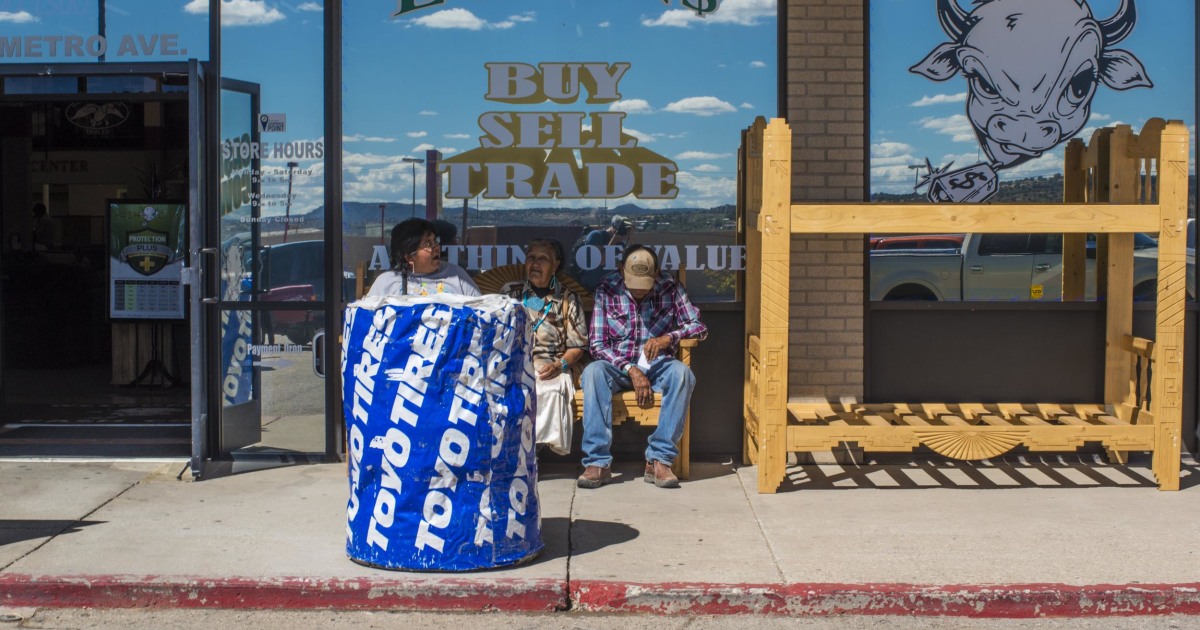There are more payday lenders in the United States than McDonald’s or Starbucks, reflecting the economic conditions in which fast money is even more important than fast food.
Payday loans, in which users pay a fee for what amounts to an advance on their paychecks, have flourished over the past 20 years. There are now over 20,000 across the country, according to the Federal Reserve of Saint-Louis, while McDonald’s has 14,267 locations.
They are most often used by people who do not have access to ordinary credit, often those who are or are at the bottom of the economic ladder, nearly a quarter of whom live on public aid or money. retirement income.
While loans can fill a need for quick cash, they can also become a way of life for users who end up paying annual effective percentage rates, or APRs, well above 300%.
Therefore, they have drawn the attention of regulators, politicians and economists to worry about those who remain in a decidedly uneven economic recovery.
“A lot of Americans literally live from paycheck to paycheck. They are at an unforeseen expense of financial distress.”
“A lot of Americans literally live from paycheck to paycheck,” said Greg McBride, chief financial analyst at Bankrate.com. “They are at an unforeseen expense of being in financial trouble.”
McBride cited some sobering statistics: Twenty-six percent of Americans have no emergency savings and 41 percent say their “top financial priority” is simply to stay on top of their spending or money. take care of their bills. This is happening even as financial headlines trump new stock highs every day and President Barack Obama’s administration touts America’s economic recovery.
“Americans who have assets have seen the value of those assets appreciate, but Americans who don’t have those assets, they don’t feel the recovery in their portfolios, especially in a time of stagnant income,” he said. McBride said. “If you don’t have these things and you haven’t seen a raise, then you’re no better, you’re not richer.”
To be poorer
Those who use payday loans, in fact, can end up poorer.
The average or typical payday borrower earns $ 22,476 per year and has paid $ 458 in fees. However, a quarter of those borrowers paid $ 781 or more in fees due to repeated use, according to the Consumer Finance Protection Bureau, which closely monitors the roughly $ 50 billion industry and will likely come up with more regulation. .
About 48 percent of borrowers had made 10 transactions in the CFPB time sample, and 14 percent had made more than 20 transactions. The median loan amount was $ 350, for a term of 14 days. Median charge of $ 15 per $ 100, which works out to an APR of 322%.
In total, consumers using payday loans had to pay their lenders 199 days, or about 55% of the year.
“It appears that these products may work for some consumers for whom an expenditure must be deferred for a short time. The key to making the product work as structured, however, is sufficient cash flow that can be used to pay down debt in the future. a short period of time ”, the CFPB written in a 2013 report study the proliferation of wages.
“However, these products can become harmful to consumers when used to compensate for chronic cash shortages,” the report continues. “We find that a significant portion of payday loan and deposit advance loan users have long-term transactions, which suggests that they are not able to fully repay the loan and pay for other expenses. without taking out a new loan soon after. “
A year ago this month, the bureau began accepting consumer complaints and received thousands soon after, according to the St. Louis Fed, which in its own recent report cited the potential for payday loans to “become a financial burden on many consumers”.
Payday loans are permitted in 36 states and the fees are lowest in the states that regulate them.
Bankrate’s McBride warned, however, that excessive regulation could be problematic if it ends up denying cash-strapped consumers who cannot get conventional loans or credit cards access to emergency funds.
“It’s a double-edged sword,” he said. “In some ways it can benefit consumers, but in some ways it can hurt consumers. The limitations on how often that borrowed amount can be renewed could keep consumers from falling into an endless pit. But there is certainly a fine line. These services exist. because the demand is so high. The reality is that many Americans need short term credit. “

